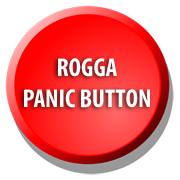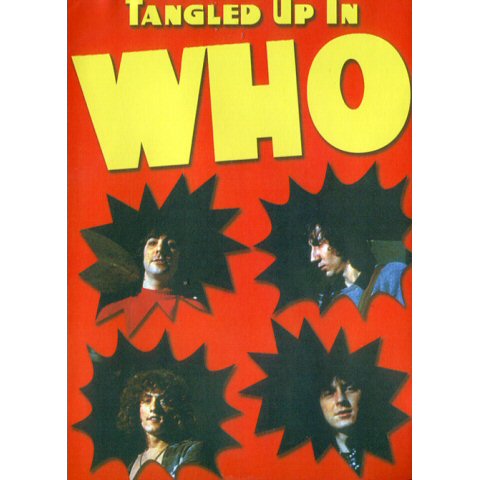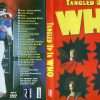Description
During the summer of 1970, Bill Graham presented an extraordinary series of concerts at Tanglewood, the renowned classical music venue located in the scenic Berkshire Hills of western Massachusetts. At the time, presenting rock music in a classical venue was a surprising and precarious step to take. To many, hearing the Fillmore and Tanglewood in the same sentence equated to “when worlds collide.” Much like his approach at the Fillmores, Graham’s “The Fillmore at Tanglewood” series presented diverse, handpicked triple bills, but with the added advantage of a beautiful open-air venue and plenty of informal lawn seating. With the Fillmore East crew providing technical support, these concerts would be hailed as a technical and artistic triumph and would entertain the largest Tanglewood audiences to date. In a year plentiful in memorable concerts, these Tanglewood performances truly stand out. Artists like The Who, Miles Davis, Santana, and Chicago all delivered inspired performances, several of which remain career-defining moments to this very day. The Who’s July 7th performance at Tanglewood was certainly one of the most highly anticipated of the three concerts that Graham presented during the 1970 series. Along with the Jefferson Airplane, The Who headlined Graham’s one-off 1969 experiment at Tanglewood and the success of that gig was indeed the inspiration for the 1970 series of concerts. By 1970, The Who were experiencing monumental success, having taken the musical world by storm with Peter Townshend’s rock opera, Tommy, the previous year. Not since the Beatles’ Sgt. Pepper had a rock album been so perceived as a “work of art,” and the momentum of Tommy sustained the group throughout 1969 and 1970. The public and critical reaction to Townshend’s rock opera had a profound effect on the group and Townshend in particular, raising The Who’s profile to stratospheric proportions. The group even booked several of their performances of Tommy into the most prestigious classical music venues in Europe and launched their 1970 American tour with two presentations at New York City’s renowned Metropolitan Opera House. Although the group’s 1970 performances were universally well received, the massive popularity and critical analysis of Tommy inevitably became a double-edged sword. The band was being embraced and criticized by the highbrow classical community as well as rock fans and critics. The new trappings of fame and the relentless media bombardment that now followed the group began to take its toll on Townshend. Partially motivated by anxiety at being perceived on a strictly artistic level, the band issued Live At Leeds, one of the rawest, loudest, most visceral live recordings ever (released seven weeks prior to this show). It was in this mode, balancing between the artistic aspirations of Tommy and the blistering hard rock of their other live repertoire, that The Who embarked on their 1970 American tour. The final night of this tour culminated in this now legendary concert at Tanglewood, where the Who headlined a bill that also included San Francisco’s It’s A Beautiful Day and Jethro Tull. In Townshend’s own words, the band would have “another bash at it,” in terms of Tommy, in addition to introducing some intriguing new material. Unreleased at the time, three of the first five songs of this set (“Heaven And Hell,” “Water,” and “I Don’t Even Know Myself”) would appear as non-album b-sides, making their inclusion of particular interest here. The entire performance is quite remarkable and these new multi-track transfers reveal the Tanglewood gig to be a far better performance than any previous recordings revealed. Often as powerful as the legendary “Live At Leeds” material and generally superior to their Isle Of Wight performance days later, these new recordings will come as a revelation to hardcore fans, providing one of the finest examples of Keith Moon and John Entwistle’s live prowess circa 1970 ever recorded. Following Bill Graham’s opening announcements and introductions of the individual band members, the Who launch into one of John Entwistle’s most powerful songs, “Heaven And Hell,” their standard opener during this era. Released as the b-side of “Summertime Blues” three days after this performance, “Heaven And Hell” is distinctly different from Townshend’s writing. Entwistle’s atheistic and at times acidic social commentaries, of which this song is a prime example, often relegated his songs to b-sides and non-album tracks. Nonetheless, it’s a propulsive opener that provides an interesting contrast to Townshend’s more spiritually-oriented writing of this era, while emphasizing the group’s strength on stage. It is a clear signpost to where Entwistle would head on his first solo album, Smash Your Head Against The Wall, the following year. The oldest original number of the set, the Kinks-like “I Can’t Explain,” follows in fine form. Unlike his musical peers in the 1964/1965 era, most of whom were still writing love songs (including Lennon and McCartney), this first single by the Who focused on the frustration of being unable to articulate one’s feelings and is an excellent example of what made Townshend’s writing stand out from the very beginning. The Who next treat the audience to two new songs back to back—material intended for their next studio EP, a project that was ultimately abandoned. These early live performances of “Water” and “I Don’t Even Know Myself” show the band’s mastery of dynamic control and reveal new diversity to Townshend’s writing. “Water,” a bluesy rocker about emptiness on every level, includes remarkable spontaneous jamming for so early in the set and is a perfect vehicle for Daltrey’s belligerent vocals. This song wouldn’t see the light of day until three years later, when it was issued as the b-side to the Quadrophenia single “5:15.” This early live reading is delivered with power and punch and allows the band to stretch out a bit. “I Don’t Even Know Myself,” humorously introduced by Keith Moon, clearly expresses Townshend’s growing frustration and confusion at this point in time. This new song provides another glimpse into his next opus, the ill-fated Lifehouse, which would be abandoned over the course of the following year, providing the songs for Who’s Next in the process. Eventually issued as the b-side of the “Won’t Get Fooled Again” single, “I Don’t Even Know Myself” is another electrifying performance that also features Daltrey blowing mouth harp early on. The structure of the song features starts-and-stops that truly showcase Keith Moon’s ability to be in perpetual motion, yet capable of stopping on a dime. Throughout this set, Keith Moon’s double bass drumming is astoundingly complicated, and he plays with a furious intensity that threatens to spin out of control, yet never does. The band’s mastery of tension and release is impressive here but even better represented on the next tune, a searing version of Mose Allison’s “Young Man Blues.” Much like the furious performance on Live At Leeds, this is another vehicle for the group to expel more raw energy before tackling the long haul of Tommy. At this point, Townshend addresses the Tanglewood audience, explaining that this will be the last gig in America for 1970; the final gig of this tour and the performances of Tommy will soon be retired. Townshend sounds genuinely happy and appreciative, no doubt in part due to the technical excellence of the show itself (i.e., great stage monitor mixes that allow these musicians to clearly hear each other and perform as one). Reflective of the ideas that would soon propel his Lifehouse project, which, at its core, addressed the symbiotic relationship between the group and its audience, Townshend makes a point to include the audience when stating that it’s time to “have you and us have another bash at it” in terms of Tommy, which is greeted with exuberant applause. He then introduces Keith Moon as “the conductor of our particular orchestra” who, with the clicks of his drumstick baton, begins humorously assembling the musicians. The Who’s distinctive first note of the “Overture” is a spine-tingling moment, and as the group introduces each of the interlocking Tommy themes in succession, the energy level gets increasingly exhilarating. Despite being the final night of the tour, the group shows little sign of fatigue, and they play as if reborn for this occasion. Toward the end of the “Overture,” when Townshend is riffing alone, the recording is so clear one can actually hear the snare on Moon’s drum kit vibrating. The excitement level of the audience and concentration level of the musicians is tangible, thanks to a recording that is crisp and well-balanced, revealing the nuances of Townshend’s guitar tone and Entwistle’s massive bass harmonics, which were rarely captured well during this era. As the “Overture” gives way to the storyline, both “It’s A Boy” and “1921” are well played and harmoniously sung, leading into the first true highlight of theTommy performance—”Amazing Journey” into “Sparks.” Here, Entwistle and Moon are equally incredible, both playing with a burning intensity that never falters. “Sparks,” a song with a self-explanatory title if there ever was one, is truly volcanic, with Moon playing at a superhuman level, Entwistle utilizing nearly every fret on his bass, and Townshend’s wind-milling power chords and abrasive string scraping downright frightening. The ferocity of this performance is astounding, before Townshend eventually softens things down, leading the group to a gentle conclusion. This gives way to the only cover song in the Tommy opus, an urgent reading of Sonny Boy Williamson’s “Eyesight To The Blind,” followed by a hyper kinetic take on “Christmas” that sonically recreates the anxious excitement of a child on Christmas morning, despite its deceptively dark lyrical content. These songs precede what is quite possibly the greatest live performance of “The Acid Queen” ever. Superior to both the Leeds and Isle of Wight performances, this not only features commanding vocals and spectacular drumming, but also serves as a prime example of Entwistle being the most original musician to ever pick up a bass guitar. The hook-laden “Pinball Wizard” that follows is nearly perfect, and unlike later renditions, still has a vitality that was rarely matched again. In contrast to just a year prior, when Tommy was first unveiled, Roger Daltrey displays remarkable growth as a singer, having become one of the most compelling vocalists in all of rock music. Differing from the original album sequence, the segue way pieces, “Do You Think It’s Alright,” “Fiddle About” (in which Entwistle gets his second lead vocal as the wicked Uncle Ernie), “Tommy Can You Hear Me,” and “There’s A Doctor” are all played in rapid succession. These songs are less consequential, but they delightfully showcase the group’s vocal abilities, which are often remarkably harmonious. This sequencing allows the band to perform “Go To The Mirror” and “Smash The Mirror” back to back, which is a great move as it provides the next outstanding sequence in this Tommy performance. “Go To The Mirror,” which first introduces the “See Me Feel Me” and “Listening To You” vocal phrases, is met with enthusiastic applause. The entire band is fully engaged again here with Entwistle clearly serving as the propulsion. Without missing a beat, Moon delivers a flourish through his drum kit that next propels the group into “Smash The Mirror,” an exercise in ratcheting up the tension level. The brief a cappella “Miracle Cure” is next and in the split second pause following it, one can hear Moon let out a joyous yelp. Townshend immediately slashes into the bone-crunching power chords that kick off “I’m Free,” another outstanding performance that gradually releases all the tension built up in “Smash The Mirror.” Before heading into the home stretch, Townshend and Moon share the vocal spotlight on the humorously inviting “Tommy’s Holiday Camp” which precedes the group’s launch into “We’re Not Gonna Take It.” Although Daltrey’s voice is beginning to show signs of strain here, it’s another fine performance filled with rebellious spirit. One can clearly sense that the Who are enjoying this last American performance of Tommy, which finally culminates in an impassioned grand finale of “See Me Feel Me,” which, by its end, has the band approaching the musical equivalent of nirvana. Now that it can finally be heard clearly and uninterrupted, this proves to be one of the tightest, more genuinely inspired live performances of Tommy ever committed to tape. Needless to say, the Tanglewood audience isn’t prepared to let this momentous evening end, and the band is still prepared to deliver one last blowout to cap off their final gig in America. Townshend again addresses the audience, ruminating on the tour, stating, “It has been the most enjoyable tour we’ve ever done in this country.” To precede the encore Townshend’s final words of the evening include “We’d like to thank you by playing you this song… a song that is very, very right for this particular moment… dedicated directly to you—’My Generation’.” And with those words, the group again explodes into their anthem with energetic exhilaration. Although the song proper is relatively short, it is crackling with raw energy, and the improvisational jam that follows is most impressive. It begins with Townshend and Daltrey reprising several themes from Tommy, which then segues into a truly jaw-dropping barrage of sounds. At times this equals the ferocity of “Sparks” earlier in the show, but it also serves as an exploration of riffs and themes that would be further developed into songs over the course of the following year, most notably “Naked Eye.” At one point, Townshend begins playing chord washes with a lovely introspective feel and Entwistle and Moon immediately drop way down, intentionally emphasizing the beauty of Townshend’s deeply resonating chords. Just when one may expect them to bring things to a delicate close, Townshend, Entwistle, and Moon launch into yet another pummeling jam that lays waste to all that preceded it. This extended version of “My Generation” perfectly encapsulates what made Townshend such a unique and brilliant guitar player on stage. There is nothing superfluous in his improvising and the sheer aural power of his wind-milling riffs and power chords fill the empty spaces in a way that resonates deeply. Whether he is playing delicate and ethereal or blazing with heat and raw power (and he is quite capable of peeling off leads of searing intensity), his strength is in the way he enhances the thundering rhythm section of Entwistle and Moon, who consistently fuel his most compelling playing here. Townshend’s ability at spontaneously creating distinctive chord riffs and then slamming them home has been copied by many, but rarely ever been equaled. The final minutes of this improvisation includes a surprising turn, as shortly after the seven-minute mark, Townshend spontaneously begins playing the distinctive opening riff to “Cinnamon Girl,” Neil Young’s new signature rocker with Crazy Horse, which had been released earlier that year. Entwistle and Moon pick up on it, fueling one final blast of fire to this blistering jam, culminating in a barrage of feedback and the final howling notes of the American tour. The fire and passion of the Who in 1970 and the symbiosis that these four musicians achieve here is nothing short of astounding. The Leeds and Isle of Wight recordings will always remain as two of the Who’s landmark 1970 recordings, and deservedly so, but thanks to this spectacular Bill Graham recording, Tanglewood is now equally worthy of attention.
Track list:
1. Intro – Heaven And Hell
2. I Can’t Explain
3. Water
4. I Don’t Even Know Myself
5. Young Man Blues
6. Overture / It’s A Boy
7. 1921
8. Amazing Journey
9. Sparks
10. Eyesight To The Blind
11. Acid Queen
12. Pinball Wizard
13. Do You Think It’s Alright?
14. Tommy Can You Hear Me?
15. There’s A Doctor / Go To The Mirror
16. Smash The Mirror
17. Miracle Cure / I’m Free
18. Tommy’s Holiday Camp
19. We’re Not Gonna Take It
20. See Me, Feel Me
21. My Generation



